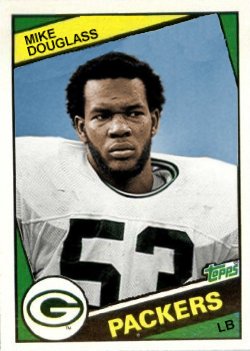
For the second year in a row, Coach Bart Starr brought in an impressive class of rookies in 1978. In fact, that season 18 rookies played in at least one game for the Packers, the most rookies Starr ever used. Eight of the team’s 14 draft picks made the team and all but one became significant contributors in Green Bay. Once again, Starr had two first round picks and chose very wisely with Stanford wide receiver James Lofton and Michigan linebacker John Anderson. Additional picks included: Minnesota linebacker Mike Hunt in round two, Illinois State defensive back Estus Hood in round three, San Diego State linebacker Mike Douglass in round five, Arkansas guard Leotis Harris in round six, Arizona State quarterback Dennis Sproul in round eight and Alabama nose tackle Terry Jones in round 11. Lofton , Anderson and Douglass are all members of the Packer Hall of Fame.
One of the ten free agents to make the 1978 Packers also is in the Packer Hall of Fame, Kansas State tight end Paul Coffman, who was the subject of my last blog entry. The other nine free agents were: Delaware State receiver Walter Tullis, Pittsburgh receiver Willie Taylor, Arkansas tackle Gerald Skinner, Arkansas defensive back Howard Sampson, Michigan State linebacker Paul Rudzinski, Clark fullback Walter Landers, Tennessee State linebacker Danny Johnson, Wyoming linebacker Francis Chesley and Eastern Kentucky receiver Elmo Boyd. All but Coffman, Sampson and Rudzinski originally were drafted by other teams and obtained via the waiver wire.
Altogether, that’s five rookie linebackers and four rookie wide receivers. Among the linebackers, Anderson, Hunt and Douglass would all move into the starting lineup by 1979, although Hunt’s career ended abruptly by injury. Starr had less luck with his three free agent wideouts who collectively caught 10 Packer passes – all by Tullis. However, Bart hit it big with Lofton who established himself immediately as a star deep threat, went to the Pro Bowl in his first season and eventually was elected to the Pro Football Hall of Fame; James Lofton was the Packers top rookie of 1978.


Custom cards in 1978 Topps style.































